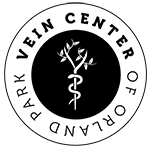At The Vein Center of Orland Park, we have been serving the Orland Park and surrounding communities for over 30 years. We take pride in diagnosing, treating, and educating the public about vein health and how to spot the symptoms of a problem. Today we would like to talk about one of the most common complications that varicose veins face: Thrombophlebitis. This long, intimidating word is the inflammatory process that occurs when a blood clot materializes within a varicose vein, generally in your legs. The two common varieties of Thrombophlebitis, are Superficial Venous Thrombosis (SVT) and Deep Vein Thrombosis (DVT). SVT occurs when the vein is closer to your skin as to where DVT occurs deep within a muscle. So, how do either of these forms of Thrombophlebitis occur and how will you know to spot the symptoms?
Symptoms and Causes of Superficial Venous Thrombosis (SVT)
As mentioned above, SVT occurs within your superficial veins that are directly under your skin. When the inflammation starts to ensue, the skin that the vein is under will become red, warm and tender to the touch. Under the surface, the vein itself will begin to feel hard much like a cord due to the clotting occurring within the vein. SVT can occur due to injury, smoking, obesity, age, limited movement, and even cancer development. Make sure to contact us if you notice any of these signs developing on the surface of your skin.
Symptoms and Causes of Deep Vein Thrombosis (DVT)
The symptoms of DVT are similar to SVT when it comes to the redness of skin, warming sensation, and tenderness of the skin. However, since DVT occurs within the depths of a muscle, the pain felt is much deeper within the leg. DVT can become potentially life threatening because the muscle surrounding the vein may cause the clot to break loose, travel up your bloodstream, and clot the blood stream to areas like your lungs. The causes of DVT can occur from injury, certain medications, surgery, age, pregnancy, limited movement do to prolong travel, and clotting disorders.
Diagnosis & Treatment Options
To diagnose if a patient has either SVT or DVT, we will first do a physical examination and ultrasound exam. If diagnosis is confirmed that a blood clot is present, we are able to prescribe anticoagulants (blood thinners) and provide you compression stockings to prevent worsening of the blood clot while the body’s healing process dissolves the blood clot.
Vein Center of Orland Park
If you or somebody you know has vein related issues from spider veins, facial veins, varicose veins, or concerns of a DVT or SVT blood clot, contact Vein Center of Orland Park today, (708)460-8800.
Dr. George Kuefner’s 30 years of exclusively diagnosing and treating vein related disorders combined with his certifications in phlebology and vascular ultrasonography qualifies him as one of the most experienced and credentialed vein specialists in the United States. His expertise is reinforced by our many satisfied patients over the years. Our goal is to make sure our patients have a comfortable experience in every step of the process at The Vein Center of Orland Park.

